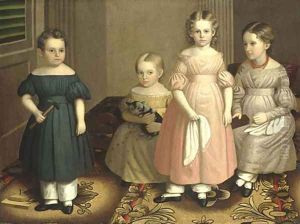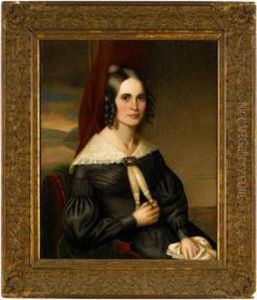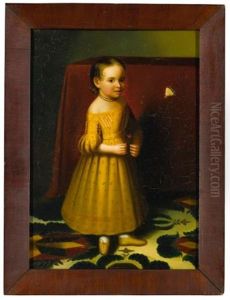Oliver Tarbell Eddy Paintings
Oliver Tarbell Eddy was an American artist born in Greenfield, Massachusetts, in 1799. His life spanned a period of significant transformation in the United States, a time when the country was still establishing its identity, culture, and artistic expressions. Eddy was primarily known for his work as a portrait painter, capturing the likenesses of many prominent figures of his time. Despite the limited documentation on his early life and training, it is clear that Eddy developed a keen eye for detail and a distinctive style that helped him gain recognition within the American art scene.
Eddy's career as an artist took him to various parts of the United States, including significant time in cities such as Philadelphia, where he was actively involved in the local artistic community. His portraits are characterized by their realism and attention to the subtle nuances of the subject’s personality, a testament to his skill and sensitivity as an artist. Unlike many of his contemporaries who traveled to Europe for formal training, Eddy's development as an artist was largely based in the United States, contributing to his distinctively American perspective on portraiture.
Throughout his career, Oliver Tarbell Eddy exhibited his work in various venues, including the Pennsylvania Academy of the Fine Arts, where his portraits were well received by both critics and the public. His contributions to American art were not limited to his own creations; he was also involved in the broader artistic community, supporting the development of American art during a pivotal period in the country’s history.
Eddy's legacy as an artist is marked by his ability to capture the essence of his subjects, contributing to the preservation of the cultural and historical identity of early 19th-century America. Although he may not be as widely recognized as some of his peers, his work remains an important part of the narrative of American art. Oliver Tarbell Eddy passed away in 1868, leaving behind a body of work that continues to be studied and appreciated for its contribution to the development of portrait painting in the United States.


